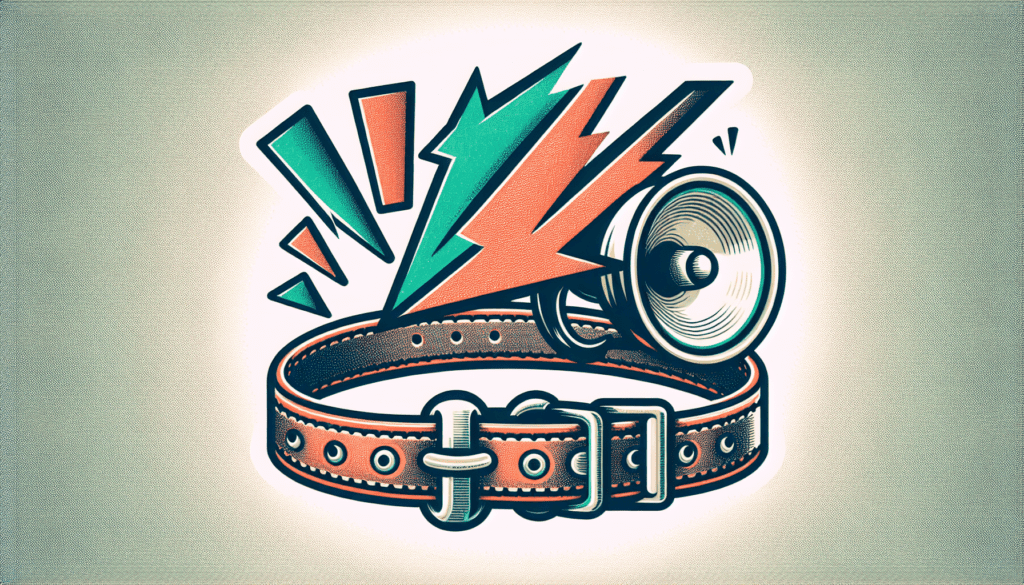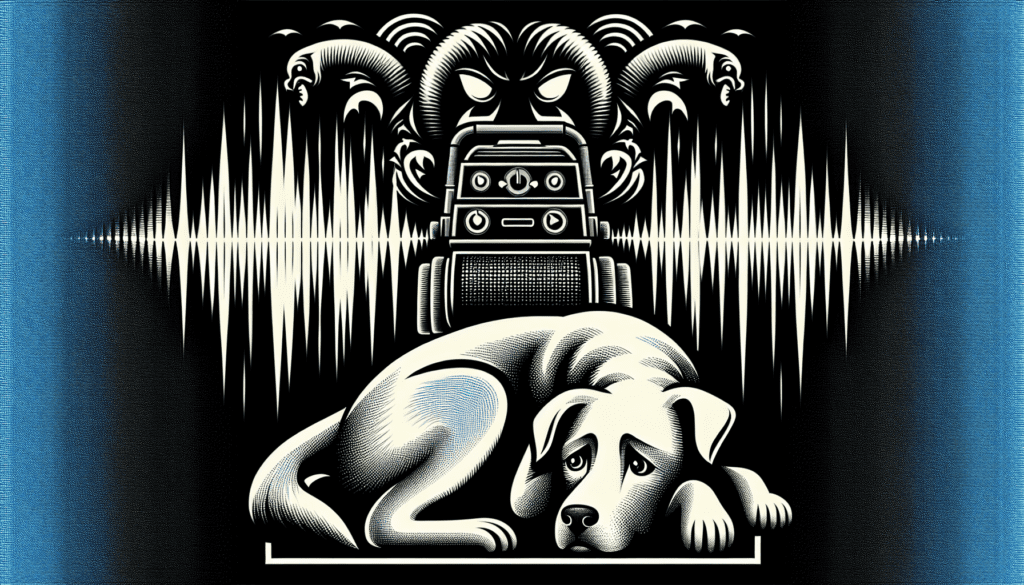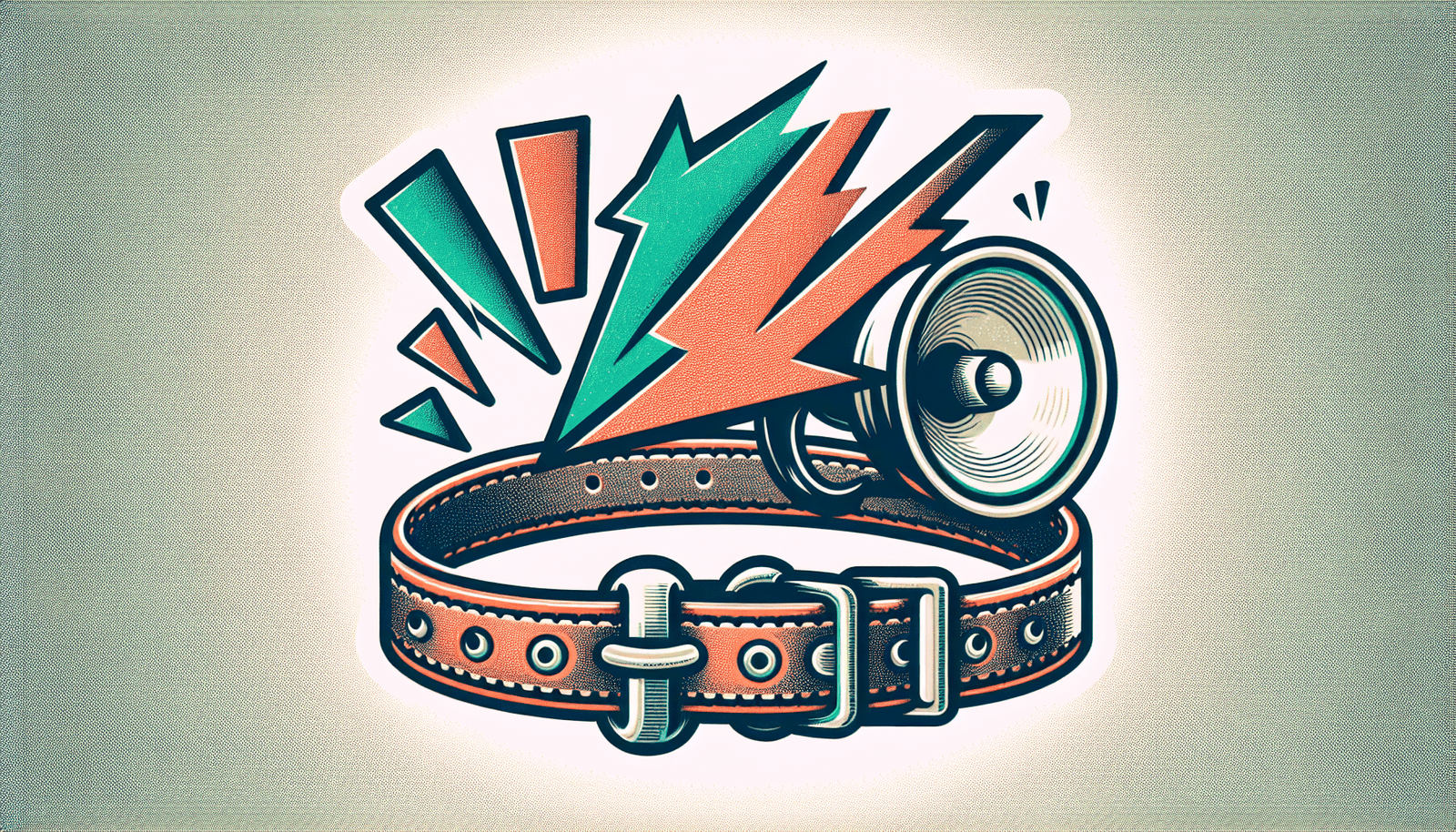If you’ve ever noticed your furry friend trembling or hiding at the sound of a vacuum cleaner or loud machinery, you’re not alone. Many dogs suffer from a fear of loud noises, and it can be distressing to see them in this state. But fear not, because there are ways in which you can help your dog overcome this anxiety. Through patience, understanding, and a few simple techniques, you can support your beloved canine companion in conquering their fear and restoring their peace of mind. In this article, we’ll explore some effective strategies to help your dog overcome their fear of loud noises, allowing them to live their best, fearless lives.

Understanding the Fear of Loud Noises
Loud noises can be particularly distressing for dogs, causing them significant fear and anxiety. There are several types of loud noises that commonly frighten dogs, including thunderstorms, fireworks, vacuum cleaners, and loud machinery. It’s important to recognize and understand the impact that fear can have on a dog’s behavior and well-being.
Types of loud noises that commonly frighten dogs
Dogs can be startled and frightened by a variety of loud noises. Thunderstorms are one of the most common triggers, with the combination of loud thunderclaps, lightning flashes, and the change in atmospheric pressure causing intense fear in many dogs. Fireworks are another common source of anxiety for dogs, especially during festive seasons and celebrations. Household appliances such as vacuum cleaners, blenders, or even construction noises can also trigger fear and distress in dogs.
The impact of fear on dogs’ behavior and well-being
When dogs experience fear, it can have a significant impact on their behavior and overall well-being. Fear can lead to a variety of physical and behavioral signs in dogs, which we will explore in the next section. Fearful dogs may become excessively vocal, displaying increased barking or growling. They may also exhibit destructive behaviors, trying to escape or hide from the source of the noise. Prolonged fear and anxiety can disrupt a dog’s eating and sleeping patterns, ultimately affecting their health and quality of life.
Identifying Signs of Fear in Dogs
Recognizing the signs of fear in dogs is crucial for understanding their emotional state and providing appropriate support. Dogs may exhibit various physical and behavioral signs of fear when confronted with loud noises.
Physical signs of fear in dogs
Physically, dogs may show signs of fear through trembling or shaking, panting, increased heart rate, or dilation of their pupils. Their body posture may become tense and low to the ground, and they may try to make themselves appear smaller by crouching or hunching over. Dogs may also exhibit signs of restlessness, pacing, or attempting to flee from the source of the noise.
Behavioral signs of fear in dogs
In terms of behavior, dogs may display avoidance or escape behaviors when faced with loud noises. They may seek refuge in hidden places, such as under furniture or in closets, trying to find a secure and quiet location. Dogs may also become more clingy, seeking comfort and reassurance from their owners. Other behavioral signs of fear can include excessive barking, whining, or even aggression if the fear escalates.

Creating a Safe Environment
One way to help your dog cope with the fear of loud noises is to create a safe and secure environment for them. Providing a designated safe space can offer a refuge where your dog can retreat to when they feel anxious or scared.
Providing a designated safe space for your dog
Identify a quiet, calm room or corner in your home where your dog can retreat to during noisy events. This safe space should be comfortable and have familiar items such as their bed, blankets, and toys. Ensure that the area is noise-insulated or as far away as possible from the source of the loud noises. Make it a positive and inviting space by using treats or praise to encourage your dog to spend time there.
Minimizing exposure to loud noises
While it may not be possible to completely eliminate exposure to loud noises, there are steps you can take to minimize it. Close windows and curtains to reduce the intensity of sound from outside. You can also use soundproofing materials or acoustic panels to reduce noise transmission from adjacent rooms or outside sources. Additionally, creating a calming environment by dimming lights, playing soft music, or using white noise machines can help mask the sounds of loud noises.
Playing calming music or white noise
Playing calming music or white noise can provide a soothing background sound that helps to drown out the sudden bursts of loud noises. Look for specific types of music designed for dogs, such as classical or instrumental tracks, which have been shown to have a calming effect on dogs. White noise machines can also be effective in masking loud sounds and creating a more relaxed atmosphere for your dog.
Gradual Desensitization
Gradual desensitization is a technique often used to help dogs overcome their fear of loud noises. The principle behind desensitization is to gradually expose your dog to the feared sound in a controlled and positive way, enabling them to build new associations and reduce their fear response.
Understanding the principle of desensitization
Desensitization involves exposing your dog to the noise that triggers their fear but at a less intense level or in a controlled manner. The goal is to gradually increase their tolerance and decrease their fearful reaction over time. The process should be done incrementally, starting with a volume or distance that doesn’t trigger a fear response and gradually increasing it as your dog becomes more comfortable.
Creating a specific training plan
To implement a desensitization program, it is essential to create a specific training plan tailored to your dog’s needs. Identify the specific loud noise that triggers your dog’s fear and break it down into smaller steps. For example, if your dog is afraid of thunderstorms, you might start by playing low-volume thunder sounds and rewarding your dog for calm behavior. Gradually increase the volume over several sessions, always ensuring that your dog remains relaxed and comfortable.
Using positive reinforcement techniques
Positive reinforcement is a key aspect of desensitization training. Reward your dog with treats, praise, or their favorite toys when they exhibit calm or relaxed behavior during the exposure to the specific noise. This positive association helps to build new positive emotions around the previously feared sound. Remember to be patient and gradually increase the difficulty of the training sessions to ensure your dog’s progress.
Counterconditioning Techniques
Counterconditioning aims to change your dog’s emotional response to the feared loud noise by creating positive associations. By pairing the loud noise with something your dog already enjoys, such as food treats or favorite toys, you can help them develop a more positive outlook toward the sound.
Establishing positive associations with loud noises
Start by selecting a highly desirable treat or toy that your dog loves. Gradually introduce the loud noise while simultaneously offering the treat or playing with the toy. By associating the noise with something pleasurable, your dog will gradually begin to form a positive connection between the two. Over time, the sound will elicit a positive emotional response instead of fear.
Using food treats or favorite toys as rewards
During counterconditioning sessions, it is important to use high-value rewards to reinforce positive associations. Choose treats or toys that your dog is highly motivated by and reserve them exclusively for counterconditioning sessions. This ensures that the rewards remain special and enticing, increasing their effectiveness in changing your dog’s emotional response to the loud noise.
Taking small steps to gradually increase exposure
When using counterconditioning techniques, it’s crucial to start with low-intensity versions of the loud noise and gradually increase exposure over time. For example, if your dog is afraid of fireworks, you could begin by playing a recording of distant fireworks at a low volume. As your dog becomes more comfortable and shows positive responses, gradually increase the volume and closeness of the sound until they can tolerate and remain calm during actual fireworks displays.
Noise-Proofing Your Dog
In addition to implementing desensitization and counterconditioning techniques, various strategies can help noise-proof your dog’s environment, minimizing the adverse effects of loud noises.
Using white noise machines or calming music
White noise machines or calming music can help mask the sudden loud noises that trigger your dog’s fear. They provide a continuous background sound that can help drown out or minimize the impact of the loud noise. Experiment with different sounds, such as gentle rain or ocean waves, to find what works best for your dog. Place the machine or speakers in the room where your dog spends the most time or close to their designated safe space.
Distracting your dog with engaging toys or puzzles
Engaging toys or puzzles can redirect your dog’s attention away from the loud noises and onto a fun and rewarding activity. Interactive toys that dispense treats or puzzles that require problem-solving can keep your dog mentally stimulated and focused. Introduce these toys or puzzles during times when you expect loud noises to occur, helping your dog associate those sounds with something positive and enjoyable.
Seeking professional help if necessary
If your dog’s fear of loud noises is severe or persists despite your efforts, it may be beneficial to seek professional help from a veterinarian or animal behaviorist. They can provide a comprehensive assessment of your dog’s fear and anxiety and recommend specialized training or interventions. Professional guidance can be particularly valuable when dealing with complex or deep-rooted fears.
Natural Remedies and Supplements
In some cases, natural remedies and supplements can help support your dog’s overall relaxation and well-being, reducing their sensitivity to loud noises. However, it’s important to consult with a veterinarian or animal behaviorist before introducing any new remedies or supplements.
Consulting with a veterinarian or animal behaviorist
Before exploring natural remedies or supplements, it’s essential to have a consultation with a qualified veterinarian or animal behaviorist. They can assess your dog’s specific needs and guide you in selecting appropriate solutions. Every dog is unique, and what works for one may not work for another, so professional advice is crucial to ensure safety and effectiveness.
Exploring options like pheromone diffusers or herbal supplements
Pheromone diffusers, such as Adaptil, release synthetic pheromones that mimic the calming scents produced by nursing mother dogs, providing a sense of reassurance to dogs in stressful situations. Herbal supplements, such as chamomile or lavender, can also have calming effects on dogs when used properly. However, it’s important to research and follow recommended dosages to avoid any potential adverse effects.
Ensuring the safety and effectiveness of natural remedies
While natural remedies can be helpful, it’s crucial to consider their safety and effectiveness. Always choose products specifically formulated for dogs and follow the manufacturer’s instructions. Monitor your dog’s response to the remedy or supplement and consult with a professional if you have any concerns or notice any unexpected reactions.
Using Anxiety Wraps or ThunderShirts
Anxiety wraps and ThunderShirts are specialized garments designed to apply gentle pressure to a dog’s body, providing a sense of comfort and security during stressful situations. These products are based on the concept of pressure therapy and can help alleviate anxiety caused by loud noises.
Understanding the concept of pressure therapy
Pressure therapy, also known as deep touch pressure, has been shown to have a calming effect on both humans and animals. The gentle pressure applied by anxiety wraps or ThunderShirts can trigger the release of endorphins, which promote relaxation and reduce anxiety levels. The snug fit of these garments creates a sensation similar to being hugged, helping dogs feel secure and protected.
Proper fitting and usage of anxiety wraps or ThunderShirts
When using anxiety wraps or ThunderShirts, it’s important to ensure a proper fit for maximum effectiveness. Follow the manufacturer’s guidelines for measuring your dog’s size and choose the appropriate wrap or shirt. It should fit snugly but not be overly tight or restrictive. Pay attention to your dog’s comfort and remove the garment if they exhibit signs of discomfort or distress.
Effectiveness and limitations of these products
Anxiety wraps and ThunderShirts can be effective tools for managing a dog’s fear of loud noises. However, it’s essential to remember that they may not work for all dogs, and their effectiveness can vary. Some dogs may respond positively and experience a significant reduction in anxiety, while others may not show noticeable improvement. It’s important to use these products in conjunction with other desensitization and counterconditioning techniques for the best results.
Establishing a Relaxation Routine
Establishing a relaxation routine can be beneficial in helping your dog manage their fear of loud noises and promote overall well-being. By engaging in regular exercise, mental stimulation, and calming activities, you can help your dog remain calm and centered during noisy events.
Engaging in regular exercise and mental stimulation
Physical exercise and mental stimulation play crucial roles in a dog’s overall well-being and can help reduce anxiety levels. Regular walks, playtime, and interactive games can help drain excess energy and keep your dog mentally stimulated. By tiring them out before anticipated noisy events, you can help them relax and be less reactive to loud noises.
Practicing calming activities like massage or aromatherapy
Calming activities such as massage or aromatherapy can provide relaxation and comfort to dogs. Massage techniques, including gentle strokes and pressure applied to specific areas, can help release tension and promote relaxation. Aromatherapy, using dog-safe essential oils like lavender or chamomile, can also have calming effects when diffused or applied in diluted form. Remember to consult with a veterinarian or professional aromatherapist for guidance on using essential oils with dogs.
Maintaining a consistent daily routine
Consistency is essential for dogs, especially those with fear or anxiety. Maintaining a consistent daily routine can help your dog feel secure and reduce overall stress levels. Stick to regular feeding times, exercise schedules, and bedtime routines. Loud noises are often unexpected, but having a stable daily routine can provide a sense of stability and familiarity for your dog, making it easier for them to cope with sudden loud sounds.
Professional Assistance and Training
If your dog’s fear of loud noises persists or escalates, seeking professional assistance from a dog trainer or behaviorist may be necessary. These professionals can provide expert guidance and training tailored to your dog’s specific fears and needs.
Consulting with a professional dog trainer or behaviorist
Professional dog trainers or behaviorists specialize in working with dogs with fear or anxiety issues. They can assess your dog’s behavior, evaluate the severity of their fear, and create a customized training plan. A trainer or behaviorist will guide you through the desensitization and counterconditioning techniques, ensuring proper implementation and progress monitoring.
Considering specialized fear or anxiety training programs
Some dog trainers or behaviorists offer specialized training programs specifically designed to address fear or anxiety-related issues. These programs may incorporate various techniques, including systematic desensitization, counterconditioning, and confidence-building exercises. They often provide a supportive and structured environment to help dogs overcome their fear of loud noises.
Exploring options such as medication if recommended by a veterinarian
In severe cases where a dog’s fear of loud noises significantly impacts their well-being, medication may be recommended as part of the treatment plan. Medications, such as anti-anxiety or calming medications, can help reduce fear and anxiety levels in dogs. However, medication should only be considered under the guidance and supervision of a veterinarian, who can assess the risks and benefits and monitor your dog’s response.
In conclusion, overcoming a dog’s fear of loud noises requires patience, understanding, and a comprehensive approach. By recognizing the signs of fear, creating a safe environment, implementing gradual desensitization and counterconditioning techniques, noise-proofing, and seeking professional assistance when needed, you can help your dog overcome their fear and improve their well-being. Remember, each dog is unique, and what works for one may not work for another, so be prepared to tailor your approach to your dog’s specific needs. With time, patience, and the right support, you can help your dog feel more secure and confident in the face of loud noises.

